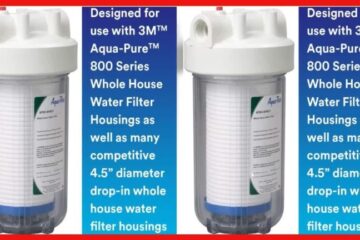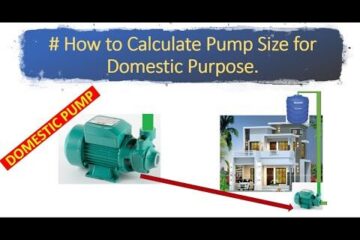In this concise guide, you will discover a step-by-step approach to constructing a functional water wheel. Whether you are an enthusiast eager to learn new DIY projects or a student researching for a science fair, this article provides a comprehensive breakdown of the process. From gathering the necessary materials to assembling the wheel, this guide offers clear instructions and helpful tips to ensure a successful endeavor. Embrace your inner engineer and join us on this exciting journey of crafting a working water wheel.
Choosing a Location
Assessing Water Source Availability
Before building a water wheel, it is crucial to assess the availability of a water source in your desired location. Look for a nearby river, stream, or any other water body that can provide a consistent flow of water to power the wheel. Adequate water source availability is essential for the wheel to function efficiently and generate the desired amount of power.
Checking for Regulations
It is vital to check for any regulations or permits required before constructing a water wheel. Some areas may have specific laws regarding the use of water bodies for energy generation or restrictions on modifying natural habitats. You may need to consult with local authorities or obtain permits to ensure compliance with legal requirements.
Considering Site Accessibility
Another important factor to consider when choosing a location for your water wheel is the site’s accessibility. Assess the ease of transportation of materials and tools to the site, as well as the convenience of maintenance and troubleshooting activities in the future. An easily accessible site will facilitate construction and upkeep, saving time and effort down the line.
Gathering Materials and Tools
List of Required Materials
To build a water wheel, you will need several materials, including but not limited to:
- Wood planks for the wheel frame and support structure
- Sturdy metal axle for the wheel
- Steel buckets or containers for collecting and transferring water
- Nails or screws for joining the components
- Waterproof sealant or paint for protecting the wood
- Reinforcing materials such as brackets or braces for added stability
Make a comprehensive list of all the materials required before starting the construction process. This will ensure that you have everything you need and minimize any delays or interruptions.
List of Required Tools
In addition to the materials, you will need certain tools to construct the water wheel. Some of the essential tools include:
- Measuring tape or ruler for accurate measurements
- Saw for cutting the wood planks to the desired size
- Drill for making holes and attaching components
- Hammer or screwdriver for joining the parts together
- Level for ensuring the wheel and support structure are properly aligned
- Shovel for excavation, if necessary
Make sure you have all the necessary tools readily available to avoid any unnecessary delays during the construction process.
Designing the Water Wheel
Deciding on Wheel Size
The size of the water wheel depends on various factors, including the available water flow, desired power output, and available space. Consider the amount of power you intend to generate and the space constraints of your location. A larger wheel will generally produce more power but may require a higher water flow rate.
Determining Number of Buckets
The number of buckets attached to the water wheel should be determined based on the desired water flow and the wheel’s size. Typically, a greater number of buckets will allow for more efficient water collection and transfer. However, too many buckets may increase the overall weight and drag on the wheel, reducing its effectiveness.
Calculating Water Flow
Calculating the water flow is crucial to determine whether the available water source will provide sufficient power for your needs. Measure the volume of water flowing through the source over a specific time period. This information will help you assess whether the water flow is adequate for your desired power output and whether adjustments are needed.
Constructing the Wheel Frame
Preparing the Base
Start by preparing the base for the wheel frame. Clear the area of any debris or obstacles that may hinder the construction process. Level the ground to ensure a stable and balanced foundation for the wheel frame.
Building the Frame
Constructing the wheel frame involves assembling the wooden planks to form the desired shape and size of the wheel. Use the appropriate measurements and ensure that the frame is sturdy and well-aligned. Consider reinforcing the joints with brackets or braces for added stability.
Attaching the Axle
Once the wheel frame is complete, attach the metal axle to the frame. The axle should run through the center of the wheel and allow it to rotate smoothly. Ensure that the axle is securely fastened to the frame and centered, as any misalignment can cause the wheel to wobble or function improperly.
Creating the Buckets
Choosing Bucket Materials
Selecting the right materials for the buckets is essential to ensure their durability and efficiency. Consider using sturdy and waterproof materials such as steel or durable plastic. Avoid materials that may deteriorate or rust over time, as this can affect the bucket’s performance.
Cutting and Shaping the Buckets
Cut the chosen material into appropriately sized pieces for the buckets. The size should allow for efficient water collection and transfer while maintaining a balance with the wheel’s design. Shape the pieces into bucket-like structures that can hold and transport water effectively.
Attaching Buckets to the Wheel
Attach the buckets to the wheel at equal intervals. Use nails, screws, or other appropriate fasteners to secure the buckets firmly to the wheel. Ensure that the buckets are evenly spaced and properly aligned to facilitate smooth water collection and transfer.
Building the Water Channel
Designing the Channel Route
Design the water channel route based on the desired flow and the location of the water wheel. The channel should have a gentle slope and lead the water directly into the buckets attached to the wheel. Proper channel design will maximize water flow efficiency and prevent water loss.
Excavating the Channel
Excavate the channel according to the designed route. Ensure that the channel is wide and deep enough to accommodate the desired water flow. Remove any obstructions, rocks, or debris that may hinder the smooth flow of water.
Securing the Channel Walls
To prevent erosion and maintain the integrity of the water channel, secure the channel walls with appropriate materials such as rocks, bricks, or concrete. Reinforce the sides of the channel to prevent water leakage and maintain a consistent flow into the wheel buckets.
Installing the Wheel Assembly
Placing the Wheel on the Axle
Carefully place the constructed wheel onto the axle, ensuring a proper fit. The wheel should rotate smoothly and without any obstructions. Make any necessary adjustments to ensure the wheel is balanced and centered on the axle.
Connecting the Buckets and Wheel
Connect each bucket to the wheel securely. Use nails, screws, or other suitable fasteners to attach the buckets to the wheel at their designated positions. Double-check the alignment and stability of each bucket to ensure efficient water collection and transfer.
Securing the Wheel Assembly
Once the buckets are attached to the wheel, secure the entire wheel assembly to the support structure. Ensure that the wheel is aligned properly and rotates freely. Use appropriate fasteners to secure the wheel, taking into account any adjustments needed for optimal performance.
Building the Support Structure
Constructing the Frame
Construct the support structure frame using the prepared wooden planks. The frame should be sturdy and able to support the weight of the wheel assembly and any additional components. Follow the appropriate measurements and ensure the frame is well-aligned and evenly balanced.
Adding Crossbars for Stability
To enhance stability and prevent any potential swaying or wobbling, add crossbars to the support structure frame. These crossbars will provide additional support and reinforce the overall stability of the water wheel system.
Attaching the Wheel Assembly
Once the support structure frame is completed, attach the wheel assembly to the frame firmly. Ensure that the wheel is centered within the frame and rotates smoothly. Use appropriate fasteners to secure the wheel assembly, taking into consideration any adjustments needed to achieve optimal performance.
Connecting the Water Source
Designing the Water Entry Point
Design the water entry point based on the location of the water source and the desired water flow into the wheel. Create a path for the water to enter the water channel, taking into account any necessary redirection or reinforcement to optimize the flow.
Attaching the Water Inlet
Attach the water inlet to the water channel at the designated entry point. The inlet should be securely fastened to prevent water leakage and ensure a smooth and consistent flow into the channel. Use appropriate seals or waterproofing materials to ensure a tight connection.
Adjusting Water Flow
Once the water inlet is attached, adjust the water flow to the desired level. Modify the channel or the inlet if necessary to achieve the optimal balance between water flow and the wheel’s design. Regularly monitor and adjust the water flow to maintain efficient performance.
Maintaining and Troubleshooting
Inspecting for Damage
Regularly inspect the water wheel system for any signs of damage, wear, or malfunction. Check the wheel, buckets, support structure, and water channel for any cracks, loose components, or leaks. Promptly repair or replace any damaged parts to avoid further issues and maintain optimal performance.
Cleaning and Lubricating
Periodically clean the wheel, buckets, support structure, and water channel to remove any debris or blockages. Lubricate the axle and moving parts to ensure smooth rotation and minimize friction. Regular maintenance will prolong the lifespan of the water wheel and maximize its efficiency.
Troubleshooting Common Issues
In case of any problems or issues with the water wheel, troubleshoot the specific area affected. Check for misaligned buckets, loose connections, or insufficient water flow. Refer to the construction guidelines and make any necessary adjustments or repairs to resolve the issue and restore the functionality of the water wheel.



